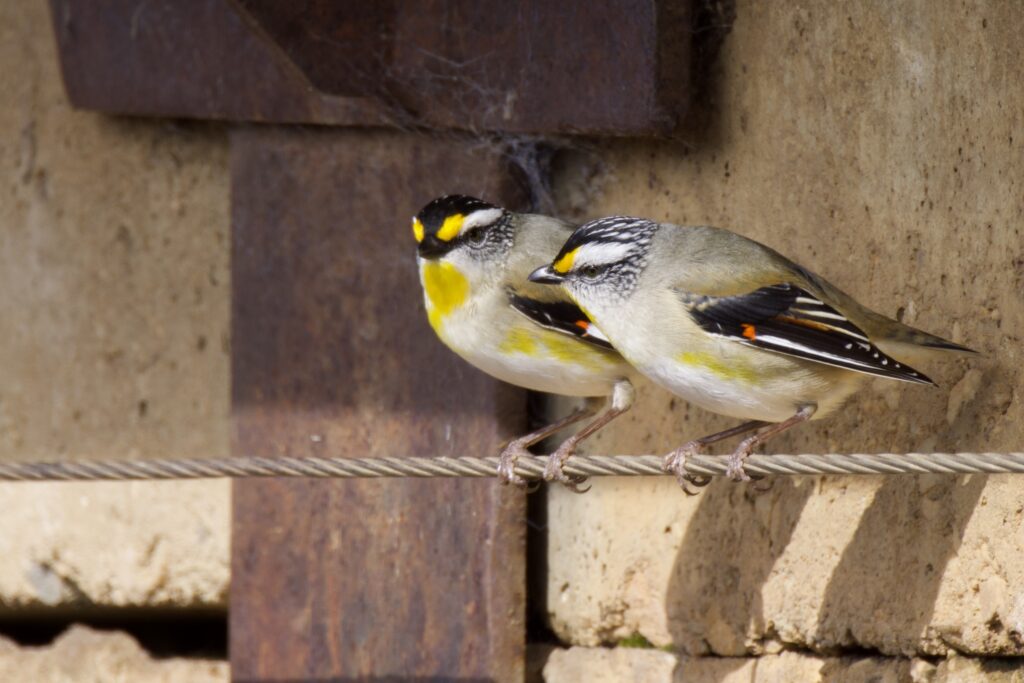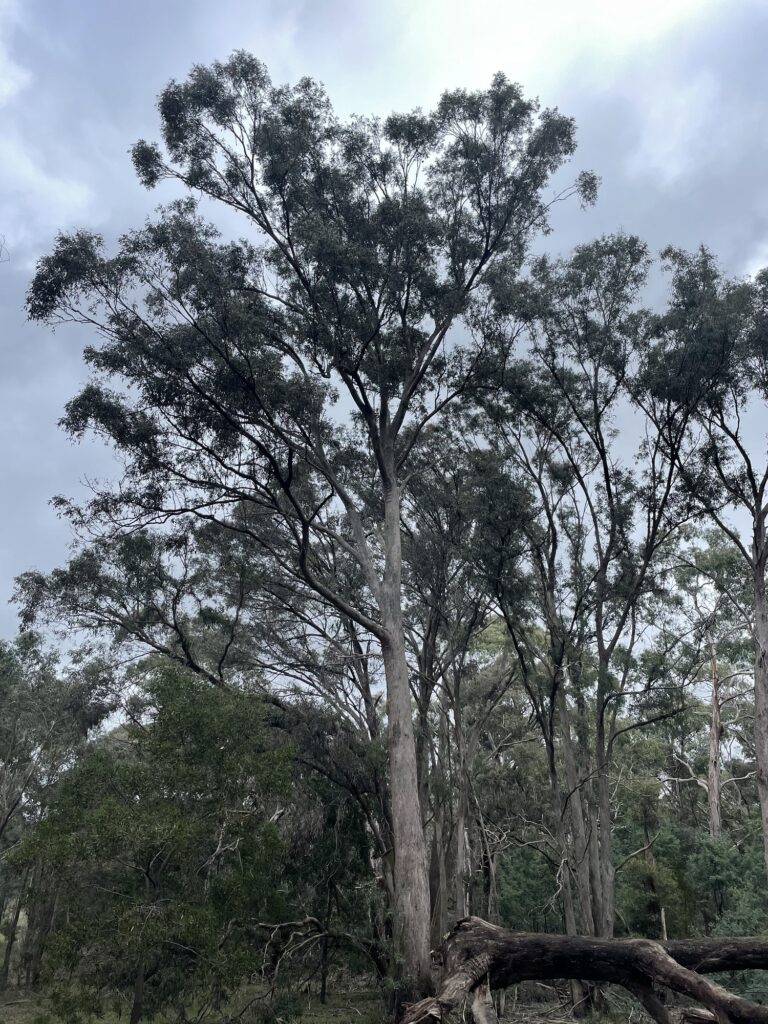At this time of year, people are thrilled to see the first signs of early spring – jonquils and the first silver wattles in flower. But for me – it’s the sound of chip chip, chip chip – the arrival of the Striated Pardalotes that give me that spring thrill.
Pardalotes are tiny birds with big heads and little tails – described as cigar-shaped in the bird books. We have two kinds locally – the Spotted Pardalote and the Striated Pardalote. Spotted Pardalotes are covered in lots of delightful white spots, whereas the Striated Pardalotes lack spots and have a greyish back and a distinctive yellow and black stripe above the eye. Both species are 10 centimetres or under in length!
Spotteds tend to be heard in our forests and woodlands all year round with their sweet sleep- de-de call which is musical and surprisingly loud. The Striateds are a complex species with a number of subspecies in different parts of the country – including a Tasmanian form that migrates to south-eastern Australia in Autumn and Winter.
So where are “my” Striated’s from? Are they always here, high up in the canopy but silent until late August when breeding begins? Or are they calling as they gather in flocks before heading back to Tassie?

A very sweet pair of Striated Pardalotes, photographed at Muckleford, by Jane Rusden.
In Porcupine Ridge I usually hear one or two birds at most on my usual walk – and I have never taken the time to try spot which subspecies they are! I usually note the call and keep on strolling…
The birds above were by photographed by Jane Rusden just recently – the little red spot on the wings and the striations on the forehead = subspecies ornatus or substriatus. Or they could be a hybrid of the two! The differences between these two local subspecies are subtle and relate to the width of the white band on the wing. So perhaps quite tricky to discern when the tiny birds are high in the canopy.
Last week whilst birdwatching on Bald Hill near Kyneton I had the great pleasure of being surrounded by a flock of at least a hundred pardalotes!

A large Narrow-leaved Peppermint and friends at Bald Hill Reserve on a dull winter’s afternoon
There were a few Spotted Pardalotes calling, but also the calls of the Striateds, and most of the birds I could see in my binoculars were Striated Pardalotes. I could only catch glimpses at best, as the birds were moving fast and the light was very poor. (Unfortunately since sending my beloved Swarovskis off to Austria for repair I have been trying and failing to get used to a little Pentax pair.) So I was definitely unable to work out the subspecies for this flock.
But it was still a magic moment – the biggest flock I had ever seen – and as the tiny birds bustled busily over the leaves of the huge old narrow-leaved peppermints, these pop pop pop sounds filled the air.
The popping was the sound of the pardalotes crunching up and eating psyllids and lerps. Lerps are the sugary coatings of the psyllid bug, which feeds on eucalyptus leaves. Pardalotes perform an essential ecosystem service by making sure trees do not get high numbers of these sap sucking bugs.
According to my Handbook of Australian, NZ and Antarctic Birds – the Tassie subspecies breeds on the island in summer and spends autumn winter on the mainland, and the other subspecies of Striated Pardalote breeds in Victoria in Summer but then move north up the coast in autumn-winter. Both kinds may gather in large flocks during migration or the non-breeding period. Were these birds coming from or on their way to Tasmania? Or perhaps local Victorian birds flocking together just before breeding season commences?
It is amazing how much we have to learn about even our common birds.
A slightly abridged version of this article was published on the Wombat Post – Daylesford’s local online news https://thewombatpost.com.au/2022/08/12/spotted-pardalotes-signal-spring/
Beautiful, thanks.
Woo hoo ! Spring is coming.
My pleasure Pierre!
We live in Hobart & we’re delighted to see & hear a few returned Striated Pardalotes on our walk near Cornelian Bay on Saturday. They’ve just arrived, so perhaps this is where yours were off to!
Ha thanks Jennie that could totally be the case- isn’t it amazing such tiny birds can fly across the Strait!!?